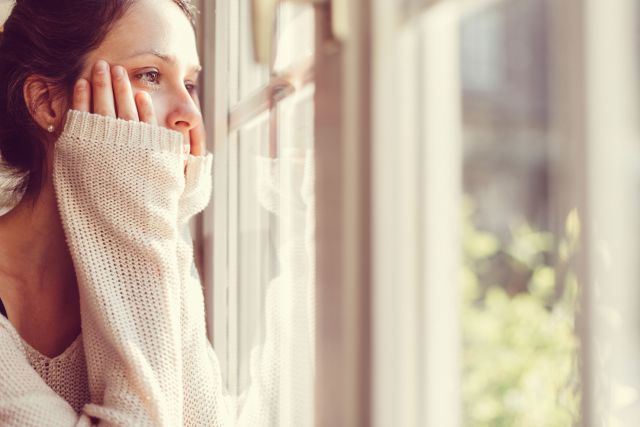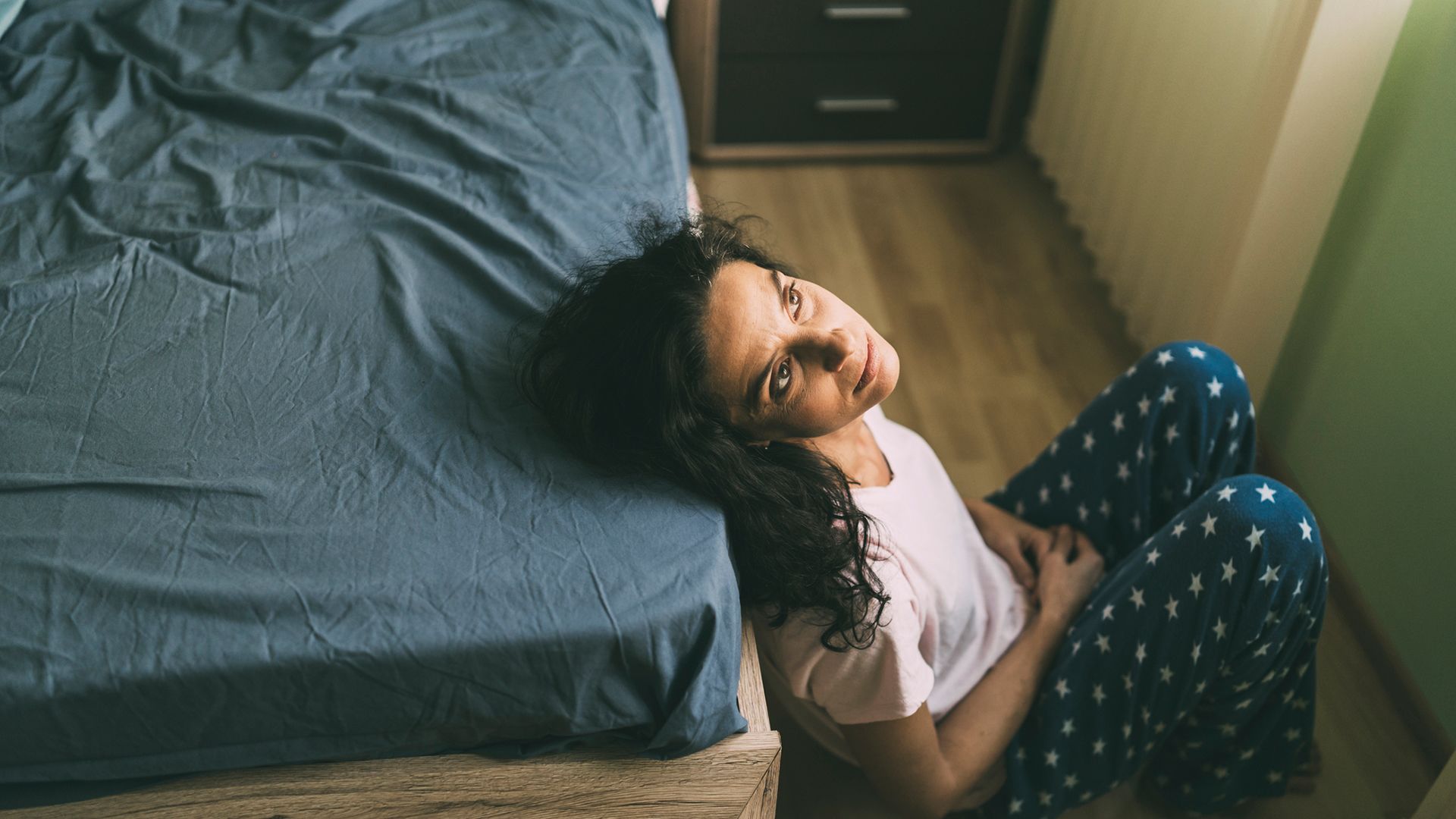Updated on September 20, 2022
In a groundbreaking move, the U.S. Preventive Services Task Force says all adults younger than 65-years old should undergo routine screening for anxiety. In a September 20 draft proposal, the independent panel of health experts recommend anxiety screening in a primary care setting—even among adults who do not have symptoms. The Task Force concluded the potential benefits of this intervention, including during pregnancy and in the postpartum period, outweigh any possible downside. The Task Force proposal is open for public comment until October 17, but the group usually affirms its draft guidance.
The panel’s recommendation is based on a review that began before the pandemic, but the experts noted the need for greater awareness of Americans' well-being has only intensified over the past few years.
“Given our current time in history, in the midst of a pandemic and with increasing numbers of serious natural disasters affecting the U.S., attention to mental health may be more important than ever,” the Task Force wrote. “A recent review concluded that the psychological effects of the current pandemic as well as past epidemics and natural disasters suggest numerous psychological impacts. Alcohol use, PTSD, anxiety, anger, fear of contagion, perceived risk, uncertainty, and distrust are a few of the immediate and long-term effects that are likely to result from the COVID-19 pandemic.”
Reckoning with the pandemic’s long-term effects
Since it emerged in 2019, COVID robbed people around the world of their physical health, their loved ones, livelihoods, social connections, and sense of normalcy. What is less apparent but no less devastating, is the toll the pandemic—and the fear, instability, grief, and isolation it fueled—took on mental health.
The pandemic trigged a 25 percent surge in the prevalence of anxiety and depression worldwide, according to a March 2022 scientific brief by the World Health Organization (WHO). The U.S. is no exception. The number of American adults dealing with these mental health issues increased from 36.4 percent to 41.5 percent between August 2020 and February 2021, the Centers for Disease Control and Prevention (CDC) reports.
But now equipped with vaccines, antiviral therapies, and more immunity across the population, things are looking up and a pre-pandemic sense of normalcy (masks off, kids in schools, workers in offices, and businesses open) has been largely restored. Data from the U.S. Census Bureau’s experimental Household Pulse Survey (HPS) show the percentage of adults reporting symptoms of anxiety and/or depression fell from 41 percent in 2021 to 32 percent during the first half of January 2022.
But it’s still a far cry from the 11 percent of adults who said they experienced these mental health issues in 2019—before the pandemic began.
The concerning trend should prompt health officials across the globe to improve their mental health services and support, cautions WHO Director-General Tedros Adhanom Ghebreyesus, who cautions that the data collected on the world’s mental health is “just the tip of the iceberg.”
COVID’s mental health toll was high
For many months, the focus was on preventing infections and saving as many lives as possible. Doing this came at the expense of jobs, social support, and security. Meanwhile, the number of people grieving or living in fear grew exponentially.
“There are many factors that make this disaster one-of-a-kind, and we’re going to see a lot of depression, PTSD, and anxiety,” says Asim A. Shah, MD, chief of psychiatry at Houston’s Ben Taub Hospital and professor and executive vice chair of the Menninger department of psychiatry at Baylor College of Medicine. “This will have long, drawn-out consequences.”
In 2020 alone, the emergency department at Ben Taub alone saw a nearly 25 percent increase in psychiatric cases, says Dr. Shah, with anxiety, depression and suicidal ideation among the major issues involved.
Generally, disasters can lead to post traumatic stress, anxiety, depression, and other psychological symptoms. Due to their unpredictable nature, victims are often left in a state of shock. But when compared to other recent tragedies that spawned widespread mental health issues—including the September 11, 2001 terrorist attacks as well as Hurricanes Katrina and Harvey—the COVID-19 pandemic has one key difference: Prolonged uncertainty.
“This is an ongoing disaster, and there’s no end date to it,” Shah explains. “There’s a lot of fear of unknowns.” This uncertainty can trigger the most anxiety and depression since people don’t even fully know what they are facing, he adds.
Even as COVID shifts from pandemic to endemic, economic recovery may be hampered by flare-ups in disease activity in certain areas, the possibility that new variants will emerge, reduced policy support, and persistent supply chain issues, The World Bank cautions. The financial strain and uncertainty associated with this health crisis may linger for some time.
Pandemic risk tolerance varies
While some Americans are back to work and adapting to a world where we coexist peacefully with COVID, others may have more trouble bouncing back from the prolonged stress.
This may be particularly true for those who were already dealing with depression and anxiety before the pandemic gripped the world, Shah says.
During prior disasters, people with preexisting mental illness, anxiety and depression were among the first ones to be affected because their threshold for problems was already low, he explains. Many people already taking medicine had to up their doses, while others who had successfully weaned themselves off depression medication had to resume their treatment, Shah notes.
Other people who may be particularly vulnerable to anxiety and depression include:
People with substance abuse problems: After spending more time isolated at home, it may have been easier for those with a drug or alcohol dependency to slip back into old, unhealthy behaviors. “We need to keep watch over those people,” Shah says. “It can be a slippery slope.”
Children and teens: If not monitored, kids can slide into depression just as easily as adults. Children younger than 5 years old shouldn’t be exposed to upsetting images on the news. Unlike adults, their brains don’t understand that the same image shown repeatedly is the same event. Instead, they think an incident happens again and again, which can be traumatic. Older kids should be informed in manageable doses and in an age-appropriate manner. “Don’t hide things,” says Shah. “They’re curious. Try to explain things to them.”
Frontline workers: Many healthcare and other essential workers have been on the front lines of the pandemic for years. While some were isolated at home, these people were forced to set their personal concerns aside for the well-being of others, putting added strain on their mental health and increasing their risk for suicidal thoughts, the WHO points out.
Older people: The isolation that resulted from the pandemic, may have taken an outsized toll on the mental health of those living alone or in nursing homes. Feelings of social disconnection and isolation are linked to greater symptoms of depression and anxiety. Isolation increases the risk of death or predict worse health outcomes among older adults.
Recognizing the warning signs
It’s normal to feel occasional anxiety, even in normal times. But high levels of stress and anxiety that become debilitating or interfere with daily activities aren’t healthy.
Persistent feelings of sadness, irritability and hopelessness could also signal depression. Other symptoms of depression may include:
- Feelings of guilt or helplessness
- Loss of interest in once enjoyable activities
- Lack of energy or fatigue
- Restlessness
- Trouble focusing or problems with memory and decision-making
- Changes in sleep habits or appetite
- Aches, pains, or digestive problems with an unknown cause
- Thoughts of self-harm or suicide
The intensity and frequency of these symptoms varies from one person to the next. By definition, people with depression typically struggle with some or all of these symptoms most of the time for at least two weeks.
Don’t hesitate to seek help
Mental health concerns, including anxiety and depression, are treatable with either medication, talk or behavioral therapy or a combination of the two.
If you or someone you care about need counseling seek support from a mental health professional.
Telemedicine took front and center during the pandemic, when many people were forced to stay in their homes. Telemedicine includes mental health care. In fact, teletherapy, or virtual therapy sessions have become a vital resource for a growing number of people.
Now, most people with Wi-Fi and a smartphone, tablet or computer can “see” a healthcare provider virtually for medical advice and keep follow up visits without leaving their home, including those who live in remote areas as well as people who lack childcare or transportation.
If you need support but have barriers to care, ask a healthcare provider if teletherapy is a possibility for you. It may be an option whether you are reaching out to a provider for the first time or you’re already under the care of a therapist or psychiatrist.






